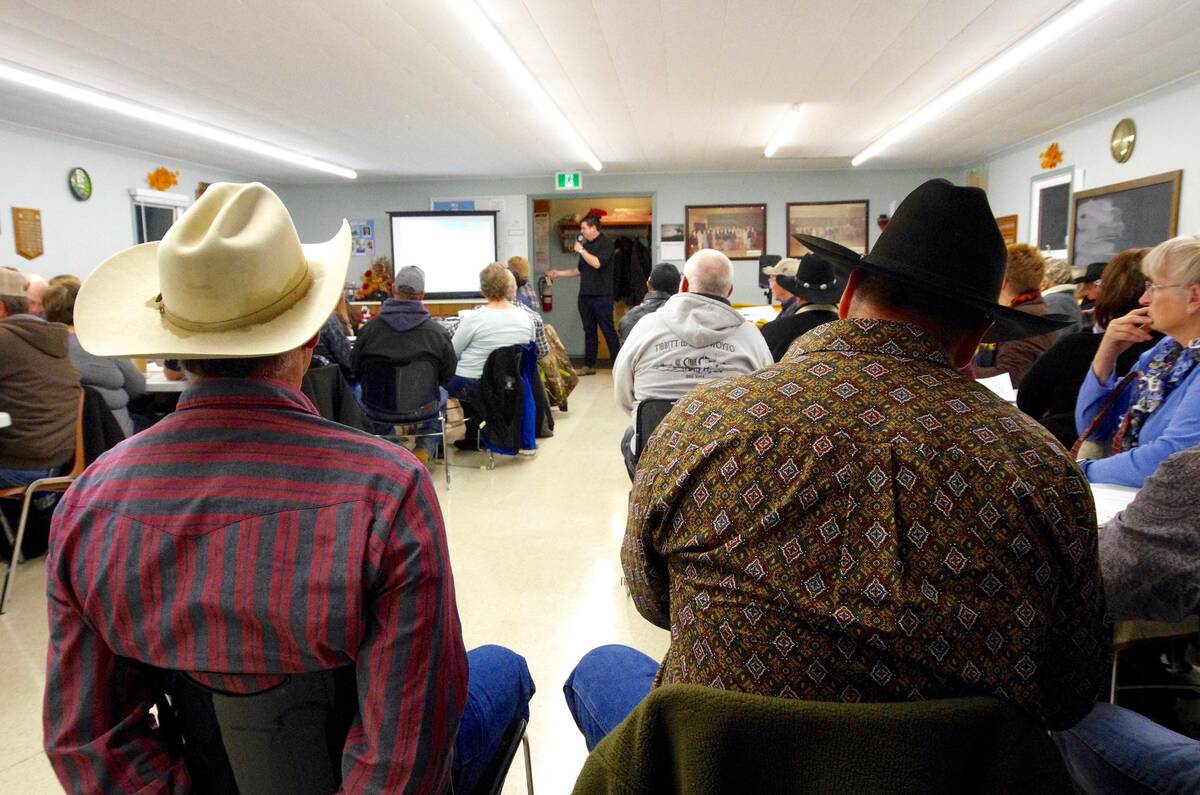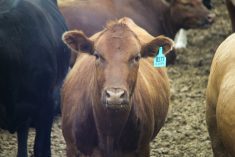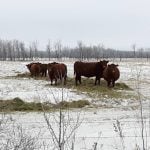Glacier FarmMedia – Beef and dairy leaders are praising a new methane reduction tool recently approved for use in Canada.
Bovaer is a powdered supplement that cattle feeders and dairy producers can mix with feed. The developers, Switzerland-based dsm-firmenich, claim it can reduce methane emissions in beef cattle by an average of 45 per cent, and by 30 per cent in dairy cattle.
According to the company, it can also improve feed-to-gain ratio by three to five per cent and lower the greenhouse gas footprint per litre of milk by 10 to 15 per cent.
Read Also

Don’t blow off that beef producer meeting
Local veterinarians and livestock experts often speak at producer events, sharing good advice for farmers on vaccines, calving, herd management and more.
“In general, I think it’s a positive development,” said Tyler Fulton, vice-president of the Canadian Cattle Association. “I think it’s important that we have access to the same sets of tools that can move the needle on environmental outcomes in the same way that other countries do.”
Bovaer has been approved for use in 58 countries to date.
Bovaer says Canadian customers can expect to pay less than 50 cents per head per day for the supplement. That can still add up quickly. However, Fulton believes cattle feeders will be willing to pay those approximate costs to meet industry goals. The beef industry plans to reduce emission intensity from primary production by 33 per cent by 2030.
Although it may look marginal at first glance, a three to five per cent production benefit in a feedlot is nothing to sneeze at, he said.
“Feedlots absolutely know their operations and know how to squeeze out every cent of margin because it’s an extremely competitive business,” said Fulton, who runs a cow-calf operation outside Birtle, Manitoba. “If there’s marginal benefit to improved feed efficiency, then it’s possible that the reductions in methane emissions could also create an additional revenue stream that wasn’t there previously.”
Even if the cost of Bovaer comes in at 50 cents per cow per day, Stuart Boeve, chair of Alberta Milk, doesn’t think that will break the bank for most dairy producers, and the positive PR could pay off in its own way.
“If you can get a bit of feed efficiency plus the press on doing something for the environment, you got your payback,” said Boeve, who runs a dairy operation near Taber. The Dairy Farmers of Canada has set a goal to reach net-zero emissions by 2050.
Research results
Karen Beauchemin, who worked with AAFC Lethbridge on 3NOP (the active compound in Bovaer) research in cattle, offered a disclaimer on the feed-to-gain improvement discovered by the research centre.
“Collectively, if you take all the research around the world and you average it out, there’s no benefit,” she said.
But that doesn’t mean there couldn’t be other benefits. For example, displaying due diligence on environmental concerns can improve public opinion about cattle industries, said Boeve.
“I’m thinking producers will do it just because of social licence, basically, and will do it even if there’s a bit of a cost to it,” he said.
There may also be opportunities to leverage 3NOP use for cash, at least in the confined beef cattle feeding sector. Fulton points to the Reducing Enteric Methane Emissions (REME) from Beef Cattle draft protocol, announced by Environment and Climate Change Canada on Dec. 10, 2023.
It encourages producers to make changes to cut enteric methane emissions from their cattle in exchange for offset credits representing one tonne of emissions production apiece. These credits could then be sold.
Emissions trading schemes have met with skepticism due to perceived delays in getting projects off the ground and questions about their usefulness in reducing GHGs. Fulton concedes that revenue streams through these mechanisms have been slow to materialize, but added REME’s support from the federal government may give it some stability.
“It’s standardized on a national basis, so I’m optimistic about how that could feed into revenue streams. Margins, especially in the feeding sector, are very tight.”
There’s also potential for enterprises that market producers’ GHG-limiting work as an input for a premium product, said Fulton.
“You could make a marketing claim if you could show that your production system has a significant reduction in methane emissions, and so then, as long as you could maintain the identity in that marketing chain, that supply chain, consumers may be more willing to purchase that beef that has this marketing claim.”
Ultimately, the science is in 3NOP’s favour, said Boeve. It’s been extensively proven to be safe for animals and the humans that consume their products. For him, that marks a “win-win” for both the company and producers.
“The industry is good with it and (it helps) the environment. You’ve got a win there.”
















